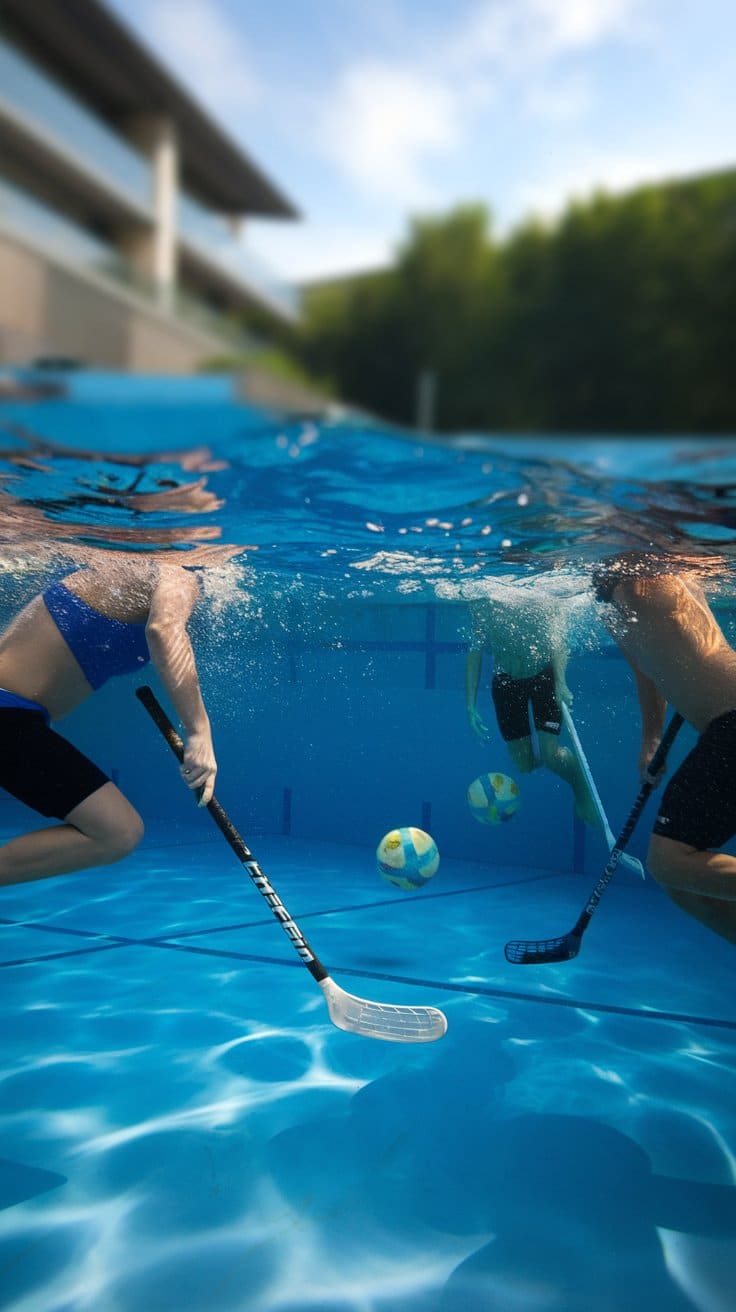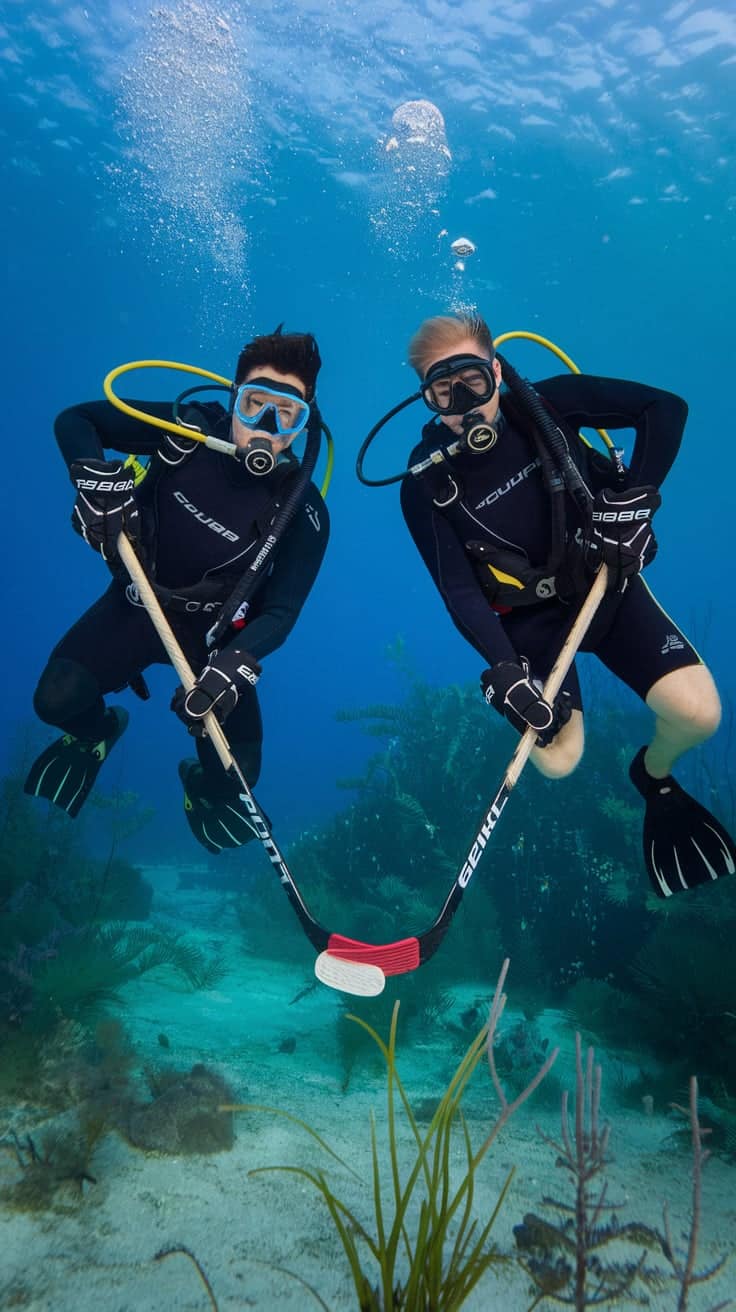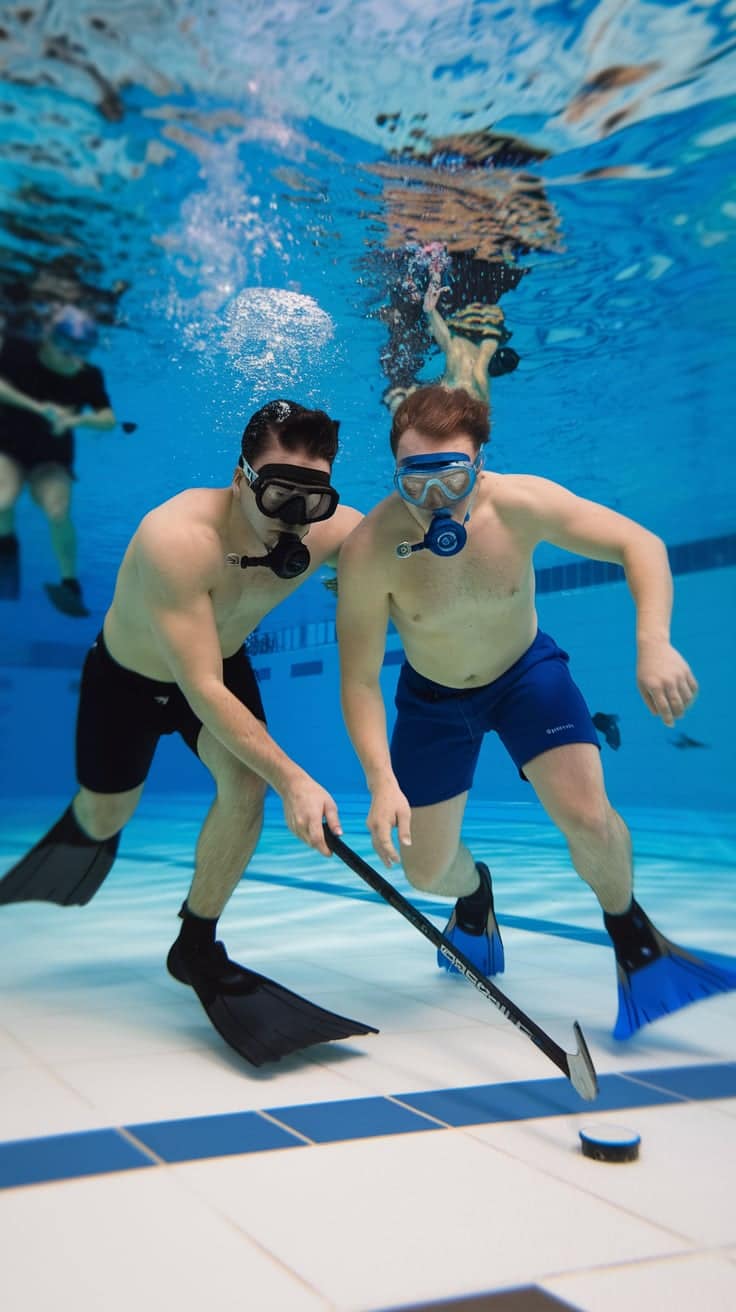If you’ve ever watched a game of underwater hockey, you might have noticed that every player wears a pair of fins. But why are fins so important? The simple answer: speed, agility, and endurance. Without fins, players wouldn’t be able to move quickly or cover enough ground underwater.
Fins are not just an accessory—they are a game-changer in underwater hockey. According to Tom Wenham, a former captain of the Great Britain underwater hockey team, “Fins are like the wheels of a racing car. Without them, you simply can’t compete.”
Let’s dive deeper into why fins are essential for underwater hockey players and how they impact the game.
1. Fins Provide Speed and Acceleration
One of the biggest reasons underwater hockey players wear fins is speed. Unlike land-based sports where players run, underwater hockey requires propulsion through water. Fins increase the surface area of the foot, allowing players to push more water with each kick. This results in faster movement and quick acceleration.
Speed Comparison With and Without Fins
| Movement Type | Average Speed (mph) |
|---|---|
| Swimming (No Fins) | 2-3 mph |
| Swimming (With Fins) | 5-7 mph |
| Elite Underwater Hockey Player | 8+ mph |
Without fins, players would struggle to chase the puck, defend their goal, or break through the opposing team’s formation.
2. Fins Reduce Fatigue and Improve Endurance
Swimming without fins requires a lot of energy, especially when playing an intense game like underwater hockey. Fins help distribute effort across the legs, making movement more efficient and reducing fatigue.
A study by Sports Science Journal found that swimmers using fins could sustain 60% more endurance compared to those without fins. This means players can stay active longer and maintain high performance throughout the game.
Expert Opinion
According to Dr. Mark Richardson, a sports physiologist specializing in aquatic sports, “Fins play a crucial role in reducing energy expenditure while maximizing propulsion. They allow players to conserve oxygen and perform at peak levels longer.”
3. Fins Provide Better Maneuverability
Underwater hockey is a 360-degree sport—players move in all directions: forward, backward, sideways, and even upside down. Without fins, making quick turns or sudden stops would be almost impossible.
Fins allow players to change direction quickly, dodge opponents, and position themselves strategically. This is essential for both offensive and defensive plays.
Example: Quick Turns in Action
Imagine you are playing as a forward. You spot an open lane and rush towards the goal. Suddenly, a defender appears. With a quick flick of your fins, you execute a sharp turn, avoiding the tackle and maintaining possession of the puck. That’s the power of fins!
4. Fins Help Players Compete at Higher Levels
If you want to compete professionally, wearing fins is non-negotiable. The World Underwater Hockey Championships require players to wear fins because they ensure fair and competitive gameplay.
According to the CMAS (Confédération Mondiale des Activités Subaquatiques), the governing body of underwater hockey, “Fins are mandatory equipment because they allow players to reach professional-level speeds and agility.”
What Type of Fins Do Pro Players Use?
| Player Level | Type of Fins Used |
| Beginners | Short, soft fins |
| Intermediate | Medium-length fins |
| Professional | Long, stiff fins |
Elite players often use long, fiberglass or carbon fiber fins, which provide maximum speed and power.
5. Fins Prevent Injuries and Improve Safety
Wearing fins doesn’t just boost performance—it also reduces the risk of injury.
- Less strain on the legs: Without fins, players would have to kick harder, leading to muscle fatigue and cramps.
- Balanced movements: Fins help distribute power evenly, reducing stress on the ankles and knees.
- Fewer collisions: Faster movements mean players can dodge opponents quickly, avoiding unnecessary contact.
According to a 2019 study by the International Journal of Sports Medicine, injury rates in underwater hockey are 30% lower among players using high-quality fins.
Real-Life Example: Injury Prevention
Sarah Thompson, a Canadian underwater hockey player, once shared her experience: “I played one game without fins due to an equipment issue. My legs were exhausted within minutes, and I pulled a calf muscle. Since then, I never play without my fins.”
6. What Happens If a Player Doesn’t Wear Fins?
To fully understand the importance of fins, let’s consider what happens if a player tries to compete without them.
| Without Fins | With Fins |
| Slow movement | Fast acceleration |
| More energy used | Energy-efficient swimming |
| Limited agility | Quick direction changes |
| Higher risk of cramps | Reduced fatigue |
Without fins, a player would be at a huge disadvantage. They wouldn’t be able to keep up with the speed of the game, leading to exhaustion and a poor performance.
Read Must: Essential Gear for Underwater Hockey: Mask, Fins, Stick
FAQs About Underwater Hockey Fins
Q1: Can players choose any type of fins?
A: No. Most leagues have regulations on fin size and material. Stiff, long fins are preferred by professionals, while beginners often use softer fins.
Q2: Do fins make a player swim faster than regular swimming?
A: Yes! Fins can increase swimming speed by more than 50%, making them essential for fast-paced sports like underwater hockey.
Q3: Are there specific brands recommended for underwater hockey?
A: Yes. Popular brands include Mares, Cressi, and Leaderfins. These fins are designed for durability and high performance.
Q4: Can playing without fins cause injuries?
A: Yes. Without fins, players exert more effort, increasing the risk of cramps and muscle strains.
Final Thoughts on the Importance of Fins
Underwater hockey players wear fins for one simple reason: they are essential for speed, endurance, agility, and safety. Without fins, players would be too slow, too tired, and too vulnerable to injuries.
Fins are more than just an accessory—they are a must-have tool for any serious underwater hockey player. Whether you’re a beginner or a professional, the right pair of fins can transform your game.
So, the next time you watch an underwater hockey match, remember: those fins aren’t just for show—they are what make the game possible!




